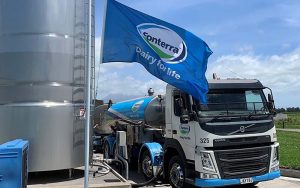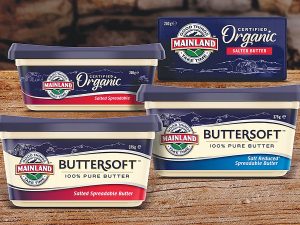
The trade ruling that got New Zealand’s attention involved U.S. complaints that Canada was using a work-around to dull the impact of extra dairy imports allowed under the United States-Mexico-Canada Agreement (USCMA), the pact that replaced the North American Free Trade Agreement in 2020.
In the new treaty, Canada agreed to let in more dairy imports, effectively softening its supply management system that has historically used high tariffs on imports to shield the domestic dairy producers from competition. But Canada quickly upset the American dairy industry by handing the majority of the extra dairy import quotas to Canadian dairy companies that had little incentive to bring in competing U.S. brands. The result was that the imports skewed toward lower-value products that importers could turn into more expensive retail goods, including bricks of mozzarella for frozen pizzas.
The panel sided with the U.S., ruling that under the treaty Canada can’t hold back import quotas exclusively for domestic processors.
New Zealand said it was following the dispute closely and welcomed the result, since Canada has used a similar quota allocation mechanism under the 11-country Trans-Pacific Partnership (TPP). “New Zealand has repeatedly maintained that this is inconsistent with Canada’s obligations under CPTPP,” Pepperwell said, adding that the Canada’s system needs “significant reform.”
New Zealand complained that Canada hasn’t actually imported the additional dairy it committed to under the TPP, which took effect in 2018. The fill rate on those quotas are “unacceptably low,” with import volumes below 10 per cent of the negotiated level in some categories, Pepperwell said.
“This is adversely affecting New Zealand exporters,” she said. “It is also adversely affecting Canadian consumers, who are missing out on the increased consumer choice.”
Global Affairs Canada said it is meeting its commitments under TPP and officials have had “general discussions” with New Zealand on the matter.
Fill rates on quotas — known officially as tariff-rate quotas or TRQs — are influenced by the market, including “competitive domestic prices, low domestic demand, market proximity, and transportation costs,” Global Affairs spokesperson Lama Khodr said in an email. But fill rates are “very high” for key products such as cheese and butter, she said. “Over the last 2 years, the Butter TRQ has been almost completely filled, virtually all of which was of (New Zealand) origin.”
The federal government has been holding consultations on its quota allocation system since 2019, though that review process appears to have stalled, according to Meredith Lilly, an associate professor of trade at Carleton University who served as a trade adviser to former Prime Minister Stephen Harper.
James McVitty, vice-president of trade strategy for the Americas region at New Zealand-based dairy company Fonterra Co-operative Group Ltd., said the review hasn’t produced any changes and “we’re wondering where that’s at.”
Under the current rules, he said Canadian processors “sit on” the import quotas rather than use them.
“It’s given to our competitors who don’t have much reason to import milk,” he said. “Canadian consumers would be getting more grass-fed New Zealand butter on the shelves.”
























